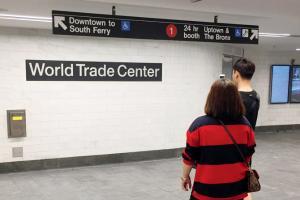But in a New York lab, a team is still avidly working to identify the remains, with technological progress on its side

A New York City subway station has reopened for the first time since it was destroyed 17 years ago in the 9/11 attack. Pic/AFP
Seventeen years later, more than 1,100 victims of the hijacked plane attacks on the World Trade Center are yet to be identified. But in a New York lab, a team is still avidly working to identify the remains, with technological progress on its side. Day in, day out, they repeat the same protocol dozens of times.
ADVERTISEMENT
At first, they examine a bone fragment found in the wreckage of the Twin Towers and try to match it with DNA samples. Cut and ground to a fine dust, the remains are then mixed with two chemical products that can expose and then extract DNA. But success is not guaranteed.
"The bone is the hardest biological material to work with," said Mark Desire, assistant director of forensic biology at the Office of Chief Medical Examiner in New York. The 22,000 pieces of human remains found at the site since the attacks have all been tested - some 10 or 15 times already. So far, only 1,642 of the 2,753 people who died in the attacks in New York have been formally identified.
Catch up on all the latest Crime, National, International and Hatke news here. Also download the new mid-day Android and iOS apps to get latest updates
This story has been sourced from a third party syndicated feed, agencies. Mid-day accepts no responsibility or liability for its dependability, trustworthiness, reliability and data of the text. Mid-day management/mid-day.com reserves the sole right to alter, delete or remove (without notice) the content in its absolute discretion for any reason whatsoever
 Subscribe today by clicking the link and stay updated with the latest news!" Click here!
Subscribe today by clicking the link and stay updated with the latest news!" Click here!






